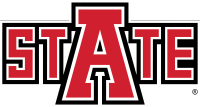Date of Award
1-10-2013
Document Type
Thesis
Degree Name
English, MA
First Advisor
Bryan Moore
Committee Members
Janelle Collins; Jerry Ball
Call Number
LD 251 .A566t 2012 P34
Abstract
A cultural icon and national myth, the cowboy has been a hero of American fiction for more than one hundred and fifty years. The emergence of the Western hero in dime novels of the nineteenth and early twentieth centuries combined with the Western motion picture boom of the 1930s, 40s, and 50s created a cowboy myth, one that often features tall, dark, and handsome gunslingers in picturesque surroundings. As with all myths, debunking is inevitable, and the late twentieth century began the current trend toward Western realism in which the appearance, duties, personality, and environment of the cowboy are depicted more realistically. Yet, the cowboy endures as an American hero regardless of myth or realism. As a cultural icon, he is looked upon favorably for certain timeless characteristics that render him heroic: honor, bravery, confidence, and compassion. In analyzing the fictional cowboy hero from different periods, for instance Owen Wister's The Virginian (1902) and Larry McMurtry's Lonesome Dove (1985), it can be determined that despite time and place, myth or realism, the cowboy continues to serve as an American hero, and the Western remains a viable genre of fiction.
Rights Management

This work is licensed under a Creative Commons Attribution-NonCommercial-No Derivative Works 4.0 International License.
Recommended Citation
Penn, Lindsay Lane, "The Cowboy Hero in American Fiction: Myth and Realism in The Virginian and Lonesome Dove" (2013). Student Theses and Dissertations. 842.
https://arch.astate.edu/all-etd/842

